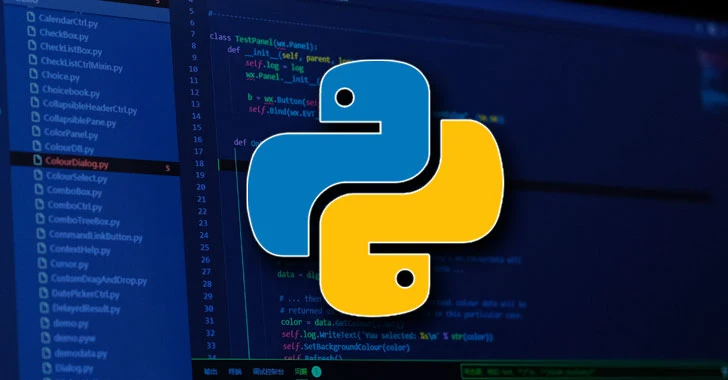Vim is not merely a text editor; it is a powerful tool that provides advanced text manipulation techniques for efficient text editing and efficient analysis for developers and system administrators.
Whether one is a seasoned programmer or a novice, mastering Vim can significantly enhance productivity and streamline development workflows.
This article will delve into both basic and advanced commands for navigating and editing text, searching and replacing content, and utilizing macros for complex tasks.
Additionally, tips and tricks will be provided to assist users in customizing their Vim experience with various customization options and optimizing their workflow.
We invite you to explore the potential of Vim for your text manipulation requirements, including the use of community-developed plugins.
What is Vim?
Table of Contents
- 1 Basic Vim Commands for Text Manipulation
- 2 Advanced Text Manipulation Techniques in Vim
- 3 Tips and Tricks for Efficient Analysis in Vim
- 4 Frequently Asked Questions
- 4.1 What is advanced text manipulation in Vim for efficient analysis? Advanced text manipulation in Vim involves mastering core commands, utilizing VimScript for automation, and integrating Vim with IDEs to optimize development workflows.
- 4.2 What are some examples of advanced text manipulation in Vim?
- 4.3 How can advanced text manipulation in Vim improve my analysis process?
- 4.4 Is prior knowledge of Vim necessary for advanced text manipulation in Vim for efficient analysis?
- 4.5 Are there any resources available for learning advanced text manipulation in Vim?
- 4.6 Can I customize my own advanced text manipulation commands in Vim?
Vim is a powerful text editor designed to enhance efficient text editing for developers and system administrators. Originally conceived by Bill Joy for the Unix operating system in the late 1970s, Vim represents an advancement of the Vi editor, which has its origins in the PDP-7. Over the years, Vim has undergone significant evolution, providing extensive customization options and support for various programming languages, thereby becoming an essential tool in many modern development workflows. Its unique modal structure comprises command mode for executing commands, insert mode for entering text, and visual mode for selecting and manipulating blocks of text. This design enhances productivity and minimizes reliance on mouse interactions. The historical significance of Vim is highlighted by its status as a staple within the programming community, having influenced numerous other text editors. Many users leverage Vim’s capabilities by integrating it with popular Integrated Development Environments (IDEs), such as Visual Studio Code, further enriching their coding experience. Originally conceived by Bill Joy for the Unix operating system in the late 1970s, Vim represents an advancement of the Vi editor, which has its origins in the PDP-7.
Over the years, Vim has undergone significant evolution, providing extensive customization options and support for various programming languages, thereby becoming an essential tool in many modern development workflows.
Its unique modal structure comprises command mode for executing commands, insert mode for entering text, and visual mode for selecting and manipulating blocks of text. This design enhances productivity and minimizes reliance on mouse interactions.
The historical significance of Vim is highlighted by its status as a staple within the programming community, having influenced numerous other text editors. Many users leverage Vim’s capabilities by integrating it with popular Integrated Development Environments (IDEs), further enriching their coding experience. Additionally, Vim’s extensibility through plugins and the ability to personalize the editing environment via configuration files, such as .vimrc, allows developers to customize their editing experience. This customization ensures that they can operate with maximum efficiency, tailored to their specific needs. The introduction of NeoVIM, a graphical version of Vim, has further expanded the possibilities for users seeking advanced configuration capabilities.
Additionally, Vim’s extensibility through plugins and the ability to personalize the editing environment via configuration files, such as .vimrc, allows developers to customize their editing experience. This customization ensures that they can operate with maximum efficiency, tailored to their specific needs.
Why Use Advanced Text Manipulation Techniques?
The utilization of advanced text manipulation techniques in Vim significantly enhances the editing experience for developers and system administrators, enabling them to manage complex tasks with greater effectiveness and efficiency.
By mastering these skills, users can optimize their performance during coding sessions, thereby reducing the time spent on repetitive actions. This approach not only promotes a more streamlined workflow but also allows for increased concentration on critical problem-solving activities. This approach not only promotes a more streamlined workflow but also allows for increased concentration on critical problem-solving activities.
For software engineers, the capacity to manipulate text seamlessly results in fewer interruptions and expedited debugging processes. Individuals who are new to Vim will discover that a thorough understanding of advanced editing techniques can considerably reduce their learning curve, facilitating a smoother and more enjoyable transition to this powerful editor. Individuals who are new to Vim will discover that a thorough understanding of advanced editing techniques can considerably reduce their learning curve, facilitating a smoother and more enjoyable transition to this powerful editor.
Basic Vim Commands for Text Manipulation
Fundamental Vim commands are crucial for text manipulation, enabling users to navigate and edit text with efficiency. Mastery of these commands establishes a solid foundation for effectively utilizing this powerful text editor. Mastery of these commands establishes a solid foundation for effectively utilizing this powerful text editor.
Navigating and editing text in Vim requires a comprehensive understanding of basic navigation commands, which are specifically designed to facilitate efficient movement through text and enable precise edits. The use of the h, j, k, and l keys for basic cursor movement can be enhanced with more advanced techniques, such as semantic movements utilizing text objects. For instance, commands like ‘w’ for forward movement and ‘b’ for backward movement allow users to navigate text in a logical manner, while features such as ‘f’ and ‘t’ provide enhanced precision when working with specific characters.
By mastering these essential motion commands, users can significantly leverage Vim’s potential to streamline their editing workflows.
The use of the h, j, k, and l keys for basic cursor movement can be enhanced with more advanced techniques, such as semantic movements utilizing text objects. For instance, commands like ‘w’ for forward movement and ‘b’ for backward movement allow users to navigate text in a logical manner, while features such as ‘f’ and ‘t’ provide enhanced precision when working with specific characters.
Integrating these commands with best practices—including the utilization of visual modes for text selection, as well as employing ‘d’ for delete and ‘c’ for change—promotes a more efficient editing experience. This approach not only reduces the time spent on routine tasks but also facilitates a smoother interaction with the text. This approach not only reduces the time spent on routine tasks but also facilitates a smoother interaction with the text.
Searching and Replacing Text
Searching and replacing text within Vim is facilitated by a series of commands that enable users to efficiently locate and modify content in their documents. For instance, by employing the command :%s/oldtext/newtext/g, users can replace all instances of ‘oldtext’ with ‘newtext’ throughout the entire file. This robust feature extends beyond the entire document; users have the option to specify ranges, such as :10,20s/foo/bar/g, to target replacements within designated lines.
For instance, by employing the command :%s/oldtext/newtext/g, users can replace all instances of ‘oldtext’ with ‘newtext’ throughout the entire file. This robust feature extends beyond the entire document; users have the option to specify ranges, such as :10,20s/foo/bar/g, to target replacements within designated lines.
Furthermore, the ability to incorporate flags, such as c for confirmation, enhances precision by prompting the user to confirm each change prior to its execution. Customization options, including the creation of keyboard shortcuts for these commands or the use of the substitute function within macros, can substantially enhance the editing experience by tailoring Vim to meet individual workflows. Customization options, including the creation of keyboard shortcuts for these commands or the use of the substitute function within macros, can substantially enhance the editing experience by tailoring Vim to meet individual workflows.
Advanced Text Manipulation Techniques in Vim
Advanced text manipulation techniques in Vim, including the use of macros and the customization of the editing environment, enable developers and system administrators to execute complex tasks with both ease and efficiency.
Using Macros
Utilizing macros in Vim enables users to automate repetitive tasks, thereby significantly enhancing the efficiency of text editing processes. By taking advantage of this powerful feature, individuals can record a sequence of commands and subsequently replay them, thus eliminating the necessity of manually repeating actions.
By taking advantage of this powerful feature, individuals can record a sequence of commands and subsequently replay them, thus eliminating the necessity of manually repeating actions. For example, when modifications are required across multiple lines of text, recording a macro to remove a character or insert a snippet allows for the application of that edit across various sections with minimal keystrokes. Common scenarios in which macros demonstrate their value include:
– Refactoring code – Formatting text – Performing bulk find-and-replace actions
Common scenarios in which macros demonstrate their value include:
- Refactoring code
- Formatting text
- Performing bulk find-and-replace actions
Ultimately, this capability reduces the time spent on tedious editing tasks and contributes to improved productivity.
Working with Multiple Files
Vim provides robust capabilities for managing multiple files, thereby enhancing the editing experience by enabling users to switch between documents seamlessly and manage their workflow effectively. By leveraging features such as tabs and split windows, users can view several files simultaneously. This functionality is particularly beneficial for comparing code or referencing material without losing focus. This functionality is particularly beneficial for comparing code or referencing material without losing focus.
By leveraging features such as tabs and split windows, users can view several files simultaneously. This functionality is particularly beneficial for comparing code or referencing material without losing focus.
The ability to navigate quickly through open files significantly reduces the time spent searching for information, resulting in a more streamlined editing process.
This efficient file management not only promotes a more organized workspace but also enhances productivity, as individuals can concentrate better while multitasking. With dedicated practice, one can master these techniques to improve overall efficiency in their development efforts.
With dedicated practice, one can master these techniques to improve overall efficiency in their development efforts.
Customizing Vim for Efficient Analysis
Customizing Vim for efficient analysis involves adjusting the editor’s features and settings to align with specific workflows and optimize overall performance. By modifying the .vimrc configuration file, users can streamline their environment by creating shortcuts for frequently used commands or adjusting visual elements to reduce distractions. Utilizing plugin managers, such as Vim-Plug or Vundle, facilitates the seamless installation and management of extensions that improve functionality, whether for syntax highlighting, code navigation, or integration with version control systems. This level of personalization not only enhances the intuitiveness of the editor for individual needs but also transforms Vim into a powerful tool specifically designed for efficient data analysis.
By modifying the .vimrc configuration file, users can streamline their environment by creating shortcuts for frequently used commands or adjusting visual elements to reduce distractions.
Utilizing plugin managers, such as Vim-Plug or Vundle, facilitates the seamless installation and management of extensions that improve functionality, whether for syntax highlighting, code navigation, or integration with version control systems.
This level of personalization not only enhances the intuitiveness of the editor for individual needs but also transforms Vim into a powerful tool specifically designed for efficient data analysis.
Tips and Tricks for Efficient Analysis in Vim
Utilizing effective strategies for analysis in Vim can greatly improve productivity, enabling users to take advantage of keyboard shortcuts and time-saving commands within their editing workflows.
Keyboard Shortcuts and Time-Saving Commands
Keyboard shortcuts and time-saving commands in Vim are essential tools that enable users to execute tasks swiftly, efficiently, and with minimal effort.
Mastering these shortcuts can significantly enhance the editing process, transforming it from a potentially daunting task into a seamless experience that allows individuals to navigate documents with precision and skill. For example, the ‘dd’ command enables users to delete an entire line effortlessly, while the ‘yy’ command facilitates the copying of the current line with ease. The combination of the ‘p’ command to paste text illustrates how efficient text manipulation can occur without the need for a mouse.
For example, the ‘dd’ command enables users to delete an entire line effortlessly, while the ‘yy’ command facilitates the copying of the current line with ease. The combination of the ‘p’ command to paste text illustrates how efficient text manipulation can occur without the need for a mouse.
These strategies not only save time but also promote a fluid editing workflow, allowing editors to concentrate on content rather than the mechanics of text management.
Frequently Asked Questions
What is advanced text manipulation in Vim for efficient analysis? Advanced text manipulation in Vim involves mastering core commands, utilizing VimScript for automation, and integrating Vim with IDEs to optimize development workflows.
Advanced text manipulation in Vim for efficient analysis refers to using advanced techniques and commands in the Vim text editor, favored by developers and system administrators, for efficient text editing and analyzing large amounts of text data.
What are some examples of advanced text manipulation in Vim?
Some examples of advanced text manipulation in Vim include using regular expressions, macros, and commands like substitute and global to quickly make changes to multiple lines of text. These techniques are enhanced further with integration with IDEs like Visual Studio Code, along with customization options and plugins from community-developed plugins.
How can advanced text manipulation in Vim improve my analysis process?
Advanced text manipulation in Vim can greatly improve the efficiency of your analysis process by allowing you to quickly and accurately make changes to large amounts of data, saving you time and effort. The advanced editing techniques, along with plugins and NeoVIM, enhance the overall editing experience.
Is prior knowledge of Vim necessary for advanced text manipulation in Vim for efficient analysis?
While prior knowledge of Vim is helpful, it is not necessary for advanced text manipulation in Vim for efficient analysis. However, understanding basic navigation, command mode, insert mode, and visual mode will aid in learning and using advanced techniques. Knowing Vim’s historical context, from Ed to Ex to Vi, and its evolution with Bill Joy and PDP-7, provides a deeper appreciation.
Are there any resources available for learning advanced text manipulation in Vim?
Yes, there are many resources available for learning advanced text manipulation in Vim, including online tutorials, books, and forums where users share tips and techniques. Notable resources include freeCodeCamp.org, YouTube channels, and works by authors such as Steve Oualline, which help users master VIM and improve their development workflow.
Can I customize my own advanced text manipulation commands in Vim?
Yes, Vim allows users to create their own custom commands using the language Vimscript, which can be useful for automating repetitive tasks or creating personalized shortcuts for certain advanced text manipulation techniques. Furthermore, users can leverage customization file (.vimrc) and plugin managers like Vim Plug for seamless customization and integration of plugins.




